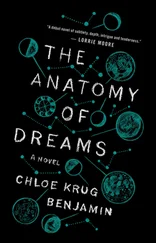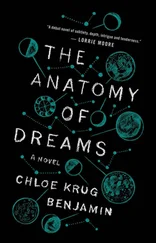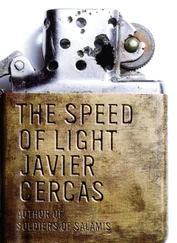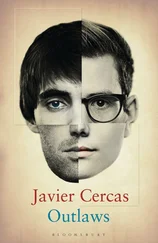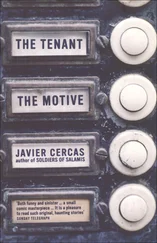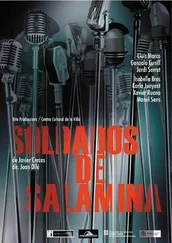That is more or less what might have happened if Armada had got inside the Zarzuela and had won over the King and the final piece of the coup had fallen into place. I mean: that’s more or less what Armada might have imagined would happen if his soft coup project triumphed; the rest of the golpistas , many of the rest of the golpistas , were imagining a hard coup — with elections proscribed, political parties proscribed, autonomous governments proscribed, democracy proscribed — but what the political ringleader of the coup was imagining or might have imagined was more or less that. Maybe it was a ludicrous thing to imagine. Maybe it was a ludicrous plan. Now, when we know that it failed, it’s easy to think it was; the truth is that it was an unpredictable plan — among other reasons because it is a universal rule that once you bring soldiers out of their barracks it’s not easy to get them back in, and because most likely, had it succeeded, the soft coup would just have been a prelude for a hard coup — but I’m not so sure it was ludicrous: after all, it wouldn’t have been the first time that a democratic parliament ceded to military blackmail, and Armada’s plan also had the virtue of disguising as a negotiated way out of the hijacking of the Cortes and a rescue of democracy operation what in reality was simply a coup against democracy. It didn’t work out, and it didn’t because in the first minutes of the coup, when its success or failure was settled, two unpredictable things happened: the first is that the taking of the Cortes was not carried out with the agreed discretion and degenerated into gunfire, which tarnished what was meant to be a soft coup with the aesthetics of a hard coup and made it difficult for the King to endorse, preventing him from tolerating in principle a political manoeuvre whose letter of introduction was an outrage as strident as that; the second is that Armada’s name came out of the golpistas ’ mouths before the general had the opportunity to explain the nature of the coup to the King and propose his solution, and that the distrust that the mention of Armada caused the King and Fernández Campo, with the addition of the rivalry between Fernández Campo and Armada, made the two of them decide to keep the former secretary away from the Zarzuela. And that is how, fifteen minutes after having started, the coup ran aground.
PART THREE. A REVOLUTIONARY CONFRONTS THE COUP
The image, frozen, shows the deserted chamber of the Cortes. No, the image is frozen, but the chamber (or rather: its right wing, which is what the image is actually showing) is not deserted: Adolfo Suárez still remains sitting on his blue prime ministerial bench, still, statuesque and spectral. But he is no longer solitary: two minutes have passed since Lieutenant Colonel Tejero entered the Cortes and beside the Prime Minister, sitting on his right, is General Gutiérrez Mellado; further to his right are three ministers who have just retaken their seats, also blue, following both men’s example; to his left, in the entrance hall, in the central semicircle, a group of Civil Guards intimidates the chamber with their weapons. A watery, sparse and unreal light envelops the scene, as if it were taking place inside a tank or inside a nightmare or as if it were only lit by the baroque cluster of spherical lamps hanging from one wall, in the top right-hand corner of the image.
Which suddenly unfreezes: I unfreeze it. Now, in the crackling and frightened silence of the chamber, the Civil Guards roam the entrance hall, the central semicircle, the four stairways among the benches, still looking for their place in the machinery of the operation; above Adolfo Suárez and the string of ministers beside him, from the desolation of empty benches, peek out one, two, three, four timid deputies struggling between curiosity and fear. Then the angle changes, and for the first time we have an image of the left wing of the chamber, where, as well as a few ministers, the Socialist Party and Communist Party deputies sit. What we see now is curiously similar and curiously different to what we’ve seen up till now, almost as if what’s happening in the left wing of the chamber were an inverted reflection of what’s happening in the right wing. Here, in the left wing, all the blue benches of the government are empty; the red benches of the deputies are too, or all except one: at the top edge of the image, in the first seat of the seventh row, just beside the press box, the floor of which is crowded with parliamentary reporters, one remains seated and smoking. The deputy is sixty-six years old, the gesture and the look behind his wire-framed glasses stony, the forehead so broad it blends into his baldness; he’s wearing a dark suit, dark tie, white shirt. It’s Santiago Carrillo, Secretary General of the Communist Party: like Suárez, like Gutiérrez Mellado, Carrillo has disobeyed the order to get down on the floor and has remained seated while the bullets riddle the chamber and his comrades seek shelter under the benches. He has disobeyed the order and now, two minutes after the gunfire, he’s going to disobey it again: after a Civil Guard walks past him without saying anything, without even looking at him, the voice of someone invisible to us orders him to imitate his colleagues and get down on the floor; Carrillo makes as if to obey, but does not obey: he moves a little in his seat, looks like he’s going to lie down or kneel down, but in the end leans to one side, the arm of the hand with the cigarette in it leaning on the armrest of the bench, in a posture as strange as it is forced, which allows him to pretend to the soldier that he’s obeyed his order without actually having obeyed.
The angle changes again: the image again includes the right wing of the chamber, where we see Suárez, Gutiérrez Mellado, a few ministers of the government and the deputies of the party that keeps it in power. Nothing substantial has changed, except that there are more and more deputies’ heads dotting the desert of empty benches: while the shot of the right wing alternates with a frontal shot of the Cortes’ dais (on the steps of which Víctor Carrascal is still lying, sheltered there since the assault caught him reading out the list of deputies’ names from the podium during the investiture vote), Suárez and the ministers lined up next to him remain in their seats, the Civil Guards continue roaming up and down the chamber, every once in a while you hear their commanding voices and unintelligible comments. Right behind one of them in the lower left of the image, at the bottom of one of the stairways between the benches, a woman appears with a Civil Guard holding her by the arm; the two of them cross the central semicircle, stepping over the prone bodies of the ushers and stenographers, and disappear off the lower right edge of the image, towards the exit. The woman is Anna Balletbó, Socialist deputy for Barcelona, who is visibly pregnant and whom the attackers set free. As soon as she’s left, a crash of breaking glass is heard in the chamber; the noise alarms the Guards and their submachine guns point to the upper part of the room, the deputies also all turn in unison in that direction, but a moment later — because it turns out to be a banal incident: undoubtedly a belated consequence of the gunfire at the beginning — everything goes back to how it was, the silence goes back to how it was and the angle changes again and the image shows Santiago Carrillo again in the midst of a desolation of empty benches, old, disobedient and smoking away, sitting alone in the left wing of the chamber. Soon, on the orders of a Guard, in the first row of benches some ministers stand up and take their seats, their faces upset, their hands humiliatingly visible on the bench’s armrests: we recognize Rodolfo Martín Villa, Minister for Territorial Administration; José Luis Álvarez, Transport Minister; Íñigo Cavero, Culture Minister; Alberto Oliart, Health Minister; Luis González Seara, Minister of Higher Education and Research. When the angle changes again and the camera again shows an image of the right wing of the chamber, something catches the eye that until then had gone unnoticed: just behind Adolfo Suárez, on the side stairway to the benches, a deputy has remained lying face down since the first shots were fired; it catches the eye because now the deputy is moving and, pale and dishevelled, he turns around on all fours while Adolfo Suárez also turns for a moment and notices — as we notice — that it is Miguel Herrero de Miñón, spokesman of his parliamentary group and one of his harshest critics within the UCD. Martial, brazen, pistol in hand, seconds later an officer from the traffic subsection of the Civil Guard makes his appearance in the entrance hall of the chamber: it is Lieutenant Manuel Boza. Instead of entering the chamber, the officer stays there, just a few metres from Suárez, observing the chamber and observing Suárez; he takes a step forward, then another and, when he’s very close to the Prime Minister, he addresses him with a surly gesture of silent violence, he says something as if provoking him or as if spitting on him, he’s probably insulting him; at first Suárez doesn’t hear him or pretends not to hear him, but then he turns towards him and for a moment the two men hold each other’s gaze in silence, motionless, and a moment later they stop looking at each other and the lieutenant climbs the side stairway and disappears into the top of the chamber. A short time later clear, commanding voices are heard (clear but also indecipherable), and then a muffled noise begins to rise while the images show alternately the right wing and the left wing of the chamber, as if wanting to offer a panoramic view of what’s happening; and what’s happening is that, obeying the order of one of the Civil Guards, the more than two hundred people who until that moment remained lying on the floor begin to stand up and retake their seats: in the left wing the first to do so are the journalists in the press box, then the members of the Communist group and finally the Socialists, so that in just a few seconds all the deputies are again visible on their benches. All, including Santiago Carrillo, who unlike the others has not had to get up because he never got down on the floor. And who carries on smoking while the image freezes.
Читать дальше

